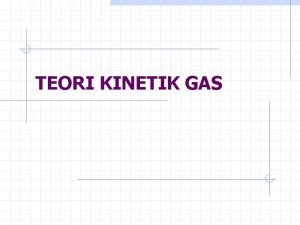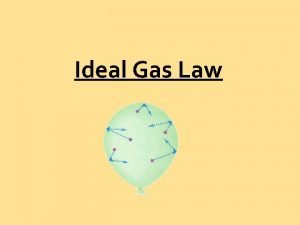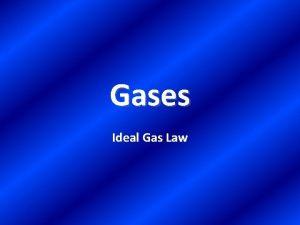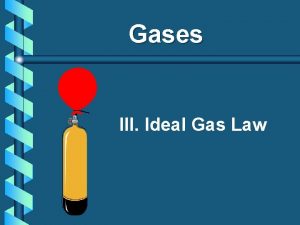Ideal Gas Model For many gases the ideal





- Slides: 5

Ideal Gas Model • For many gases, the ideal gas assumption is valid and the P-v-T relationship can be simplified by using the ideal gas equation of state: Pv=RT (Compressibility factor Z=1) • For an ideal gas, it can be shown that the specific internal energy u is a function of temperature only, u=u(T) • Accordingly, specific enthalpy is a function of temperature only, since h(T)=u(T)+pv=u(T)+RT • Physically, a gas can be considered ideal only when the intermolecular forces are weak. This usually happens in low pressure and high temperature ranges.

Ideal Gas Model(cont. ) • Specific ratio k=cp/cv, cp=cv+R • In some cases, the temperature dependence of the specific heat can be written in polynomial form, see Table A-2, p. 845 • Otherwise, ideal gas tables are also available. They are easier to use compared to thermodynamic tables since temperature is the only parameter.

Example: Two tanks filled with air are connected by a valve as shown. If the valve is opened and the gases are allowed to mix while receiving heat from the surrounding. The final temperature is 227°C. Determine (a) the final pressure of the mixture, (b) the amount of heat transfer during the mixing process. Assume ideal gas model is valid. Air, 1 kg, 127°C 0. 05 MPa Air, 2 kg 247°C 0. 02 MPa Assume: little change of KE & PE Both the initial and the final states are in equilibrium From table A-1, Tc=132. 5 K, Pc=3. 77 Mpa Tr=3, Pr=0. 0133 for tank 1 From Figure A-13, compressibility factor Z=1, good ideal gas assumption










